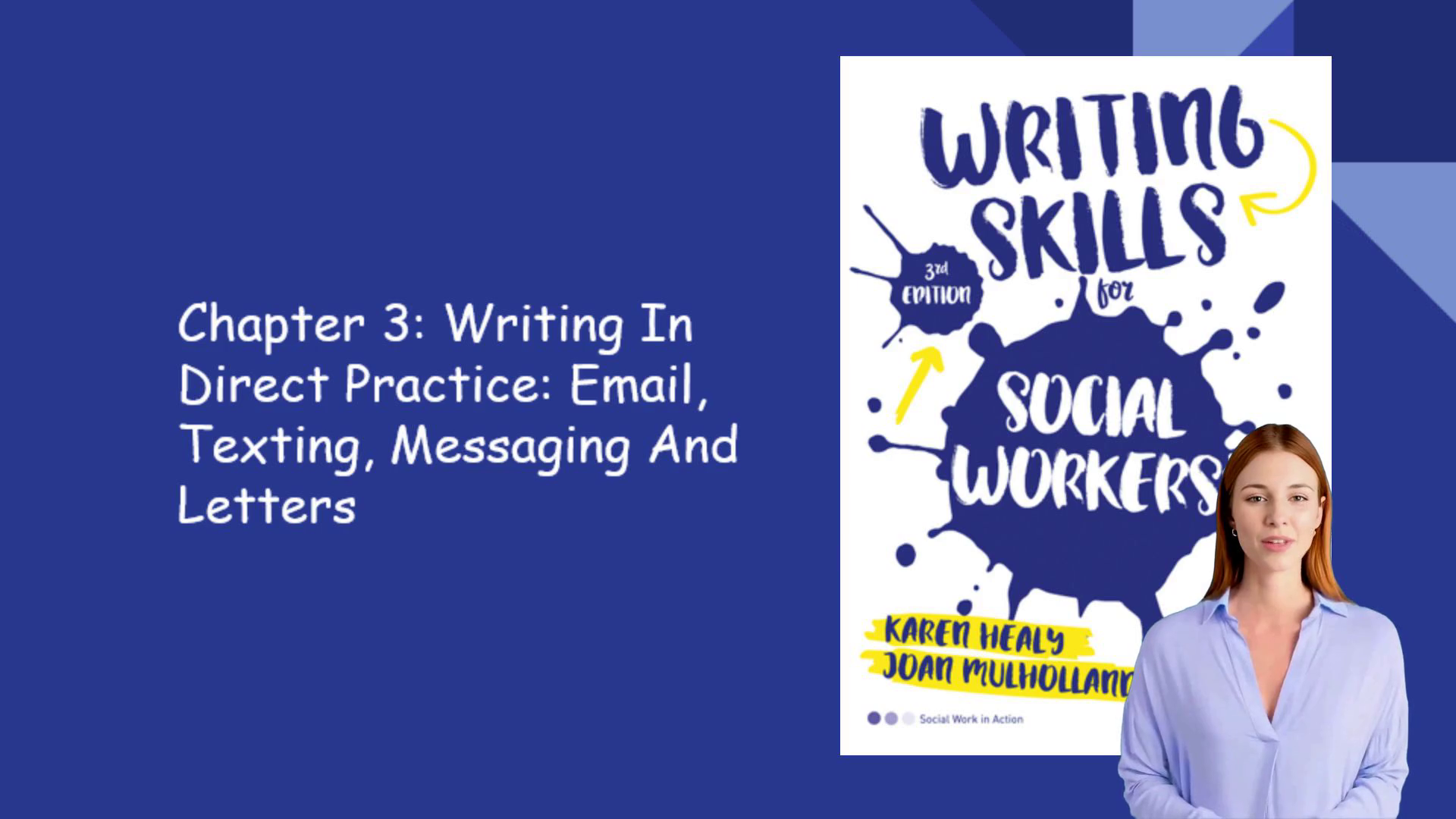
Page 1 (0s)
[Virtual Presenter] Good morning everyone. Welcome to this presentation about how to use email effectively and efficiently in professional settings. In this session, we will be discussing the key issues related to email, sending and responding to emails, and writing an email in the preferred style for the purpose of professional communication. Let's begin by looking at Chapter 3: Writing in Direct Practice: Email, Texting, Messaging, and Letters..
Page 2 (28s)
[Virtual Presenter] In this slide, we will look into the use of electronic communication in direct practice. It all started in 1975 when email was first used by people in the US Defense Advanced Research Project Agency for the exchange of information. Since then, email has become a widely used form of communication in the professional world. It is known for its capability of attaching files and a brief, formal memo with sender and receiver information. We will now examine the different ways we use electronic communication and analyze its advantages and disadvantages in direct practice..
Page 3 (1m 4s)
[Virtual Presenter] Email is a widely used form of professional communication. However, there is no formal instruction in the best approaches to use it, often leaving users to try different tactics and learn as they go. While it is easy to send messages, it lacks features to effectively present sentiment or interpersonal communication, and can become overwhelming. Now, let's turn to the next slide..
Page 4 (1m 31s)
[Virtual Presenter] When it comes to emails, consideration should be taken when it comes to the information placed in each line. The "To" line should be given extra attention, as it contains the identity of the sender. "CC" notifies anyone else who has received a copy of the message. "BCC" might also be utilized, keeping the recipient unaware of any other recipients. The "Subject" line should be straightforward in providing details of the message. Attachments, priority levels and reply functions may also be used to verify accurate information is transmitted to the recipient..
Page 5 (2m 6s)
[Virtual Presenter] When sending emails, texts, messages, or letters in a professional context, it is important to show consideration for the reader. This can be done by avoiding the use of overly-capitalized words, colors that may appear off-putting, and any non-standard abbreviations. Never send any type of communication when feeling an elevated emotional state, and take extra care when handling emotionally charged topics. Moreover, emojis and emoticons should not be used in formal, professional correspondence..
Page 6 (2m 40s)
[Virtual Presenter] It is important to keep in mind that when writing professional emails, the reader may not have a lot of time available to read the message. Therefore, the email should be as concise and direct as possible. When needing to include more detailed information, it is helpful to provide subheadings so that the reader is able to easily navigate the content. Any external sources referred to should have a detailed address so the reader can quickly locate the pertinent information..
Page 7 (3m 9s)
[Virtual Presenter] Awareness of the issues associated with email threads is crucial. As highlighted in the quote, they can become long and tedious. To avoid this, one must delete unnecessary content manually or take advantage of the email system's ability to delete particular threads if required. Now, let us shift to the subsequent slide to obtain more information about this..
Page 8 (3m 37s)
[Virtual Presenter] SMS, or short message service, is a popular way to communicate electronically. Though it can be fast and easy to use, there are some things to keep in mind when sending text messages. Be concise and clear with your message to make sure the recipient fully understands what is being said. Outline the importance and urgency of your message to make sure it is taken seriously. Remember that text messages may be sent with less attention than other forms of communication, so be sure to double check before sending..
Page 9 (4m 9s)
[Virtual Presenter] IM, or instant messaging, has become a common way to communicate quickly and engage in conversations in real time. It is a type of text-based electronic messaging system, but it has its drawbacks. For instance, users must plan ahead to be accessible to receive messages, and both users must have compatible IM programs to be able to communicate..
Page 10 (4m 32s)
[Virtual Presenter] We have explored the fundamentals of writing in direct practice, including email, texting, messaging and letters. We have discussed the presentation of letters, the opening and closing sections and the types of important letters, including advocacy letters. We have underscored the importance of filing all letters for future reference. Thank you for your attention..